With its temperate climate and lush forests, Western Washington provides fertile ground for fungi. While anyone can spot colorful mushrooms on a hike, foragers with a trained eye and a sustainable approach can also harvest a range of edible varieties. Different species ripen throughout the year in a number of locations, making mushroom foraging in Washington a great multi-season activity.
When to go Mushroom Foraging in Washington
While spring brings harvests of wrinkly morel mushrooms and winter is perfect for oyster mushrooms or shelf-like conks, fall is the perfect time for beginners to try their hand at mushroom hunting. From September through November, many prime edibles appear – think golden chanterelles, plump king boletes (also known as porcini), brilliant orange lobsters, and spiky hedgehogs.
Luckily, there’s plenty of guidance for those looking to get started. Fall brings foraging workshops, guided hikes, festivals, and classes. Discover beginner-friendly foraging destinations, safety tips, and more.
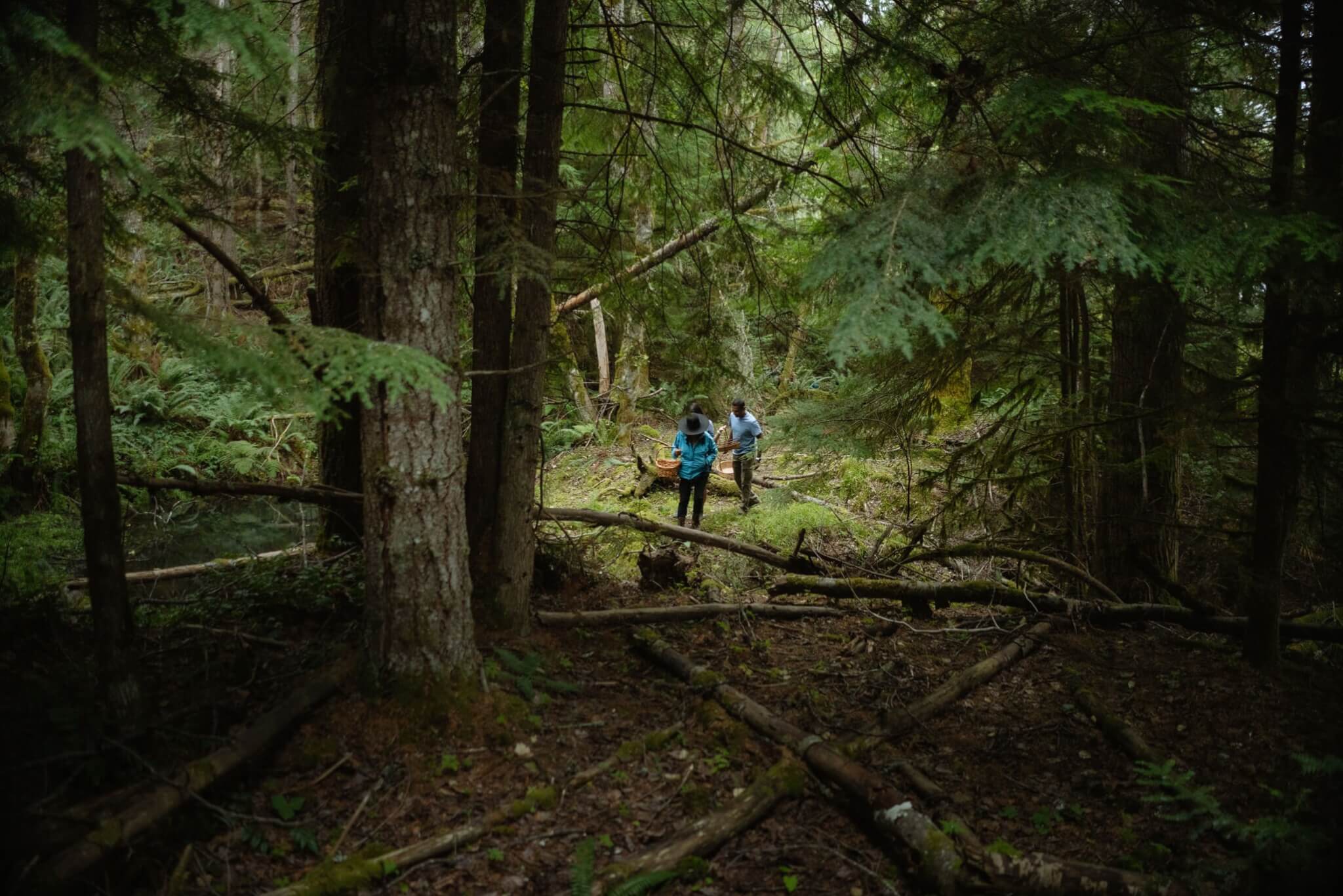
Learn from an Expert
The best beginner resource for mushroom hunting in Washington is the Puget Sound Mycological Society (PSMS), one of the largest of its kind in the United States. This volunteer-run organization offers guided forays, meetings, and lectures for its members, as well as comprehensive information for visitors. Visit the website for current information on all things related to wild mushrooms, from local events and regulations to recipes. Other mushroom clubs throughout the state can be found in its resource list. Another great option for beginners is Forage Seattle, which offers guided tours led by experts.
One of the most anticipated events of the year is PSMS’ annual Wild Mushroom Show in October. Fun for experts, novices, and everyone in between, you’ll see amazing displays of over 200 different varieties with notes about edibility. After attending a lecture, exhibit, or photography show, sample some fungi treats and shop for the latest gear.
Where to go Mushroom Foraging in Washington
Dense forest canopies hold in humidity and create moist forest floors – the perfect growing conditions for wild fungi. At the same time, coastal areas bring in fog, providing a wet environment where mushrooms flourish. The western side of the state is home to some of the most common areas to hunt for wild fungi. For even more areas and specific hikes, check out the Washington Trail Association’s handy guide.
Olympic Peninsula
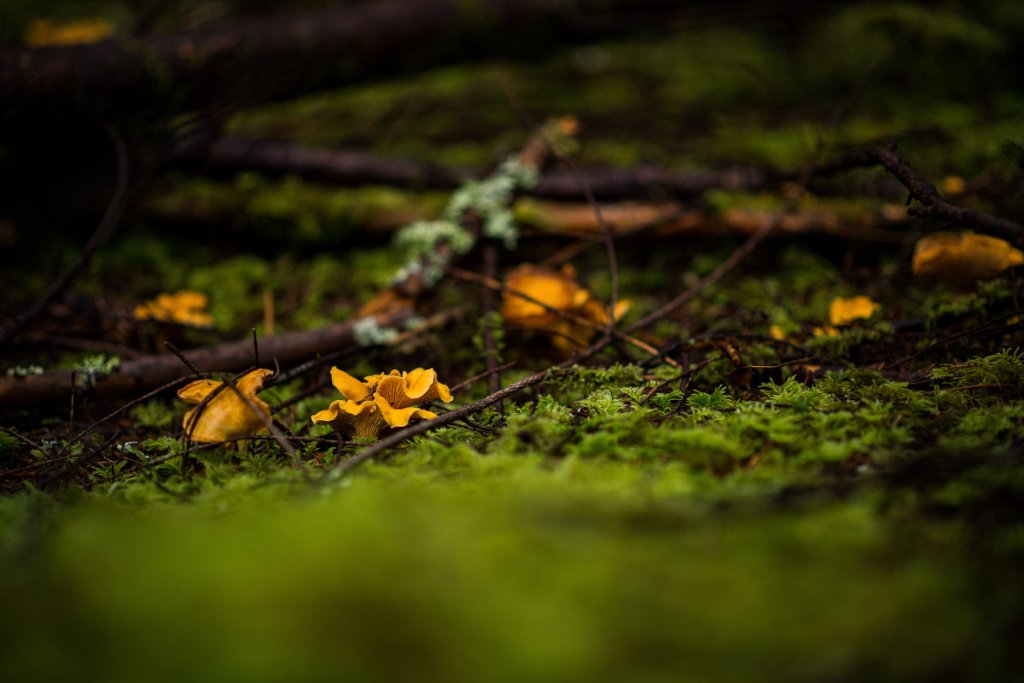
Look for: Chanterelles, king boletes, oyster mushrooms
With over 1,400 species of wild mushrooms—the most diverse territory for fungi in the state—you’ll find incredible, peaceful trails for foraging near the Quinault, Hoh, Sol Duc Valley, and Staircase regions of Olympic National Park. Although you can find edibles like chanterelles or oyster mushrooms, the park is also the perfect spot to simply enjoy the range of fungi colors, from snow white to bright red and deep violet. Foragers can collect one quart of mushrooms per person, per day within the park. Base yourself in Port Angeles in October to attend the Olympic Peninsula Fungi Festival, which covers everything from including mushroom cultivation and foraging techniques to culinary and medicinal uses, plus talks and hands-on workshops.
Encompassing the south end of the park and stretching to the coast, Grays Harbor County is home to incredible mushrooms. In fall you’ll find layered shelves of brilliantly yellow and orange chicken of the woods, ruffly orange chanterelles, and giant king boletes popping up from the forest duff. Try searching in the Quinault Rainforest and other areas near Lake Quinault or Wynoochee Lake. For a cozy fall escape, base yourself at the historic Lake Quinault Lodge or time your visit for October to attend the annual Quinault Rainforest Mushroom Festival.
On the east side of the peninsula, be sure to check out guided mushroom walks with Hood Canal Adventures, based in Brinnon.
Also See: Things to do on the Olympic Peninsula
Mount Rainier and Mount St. Helens
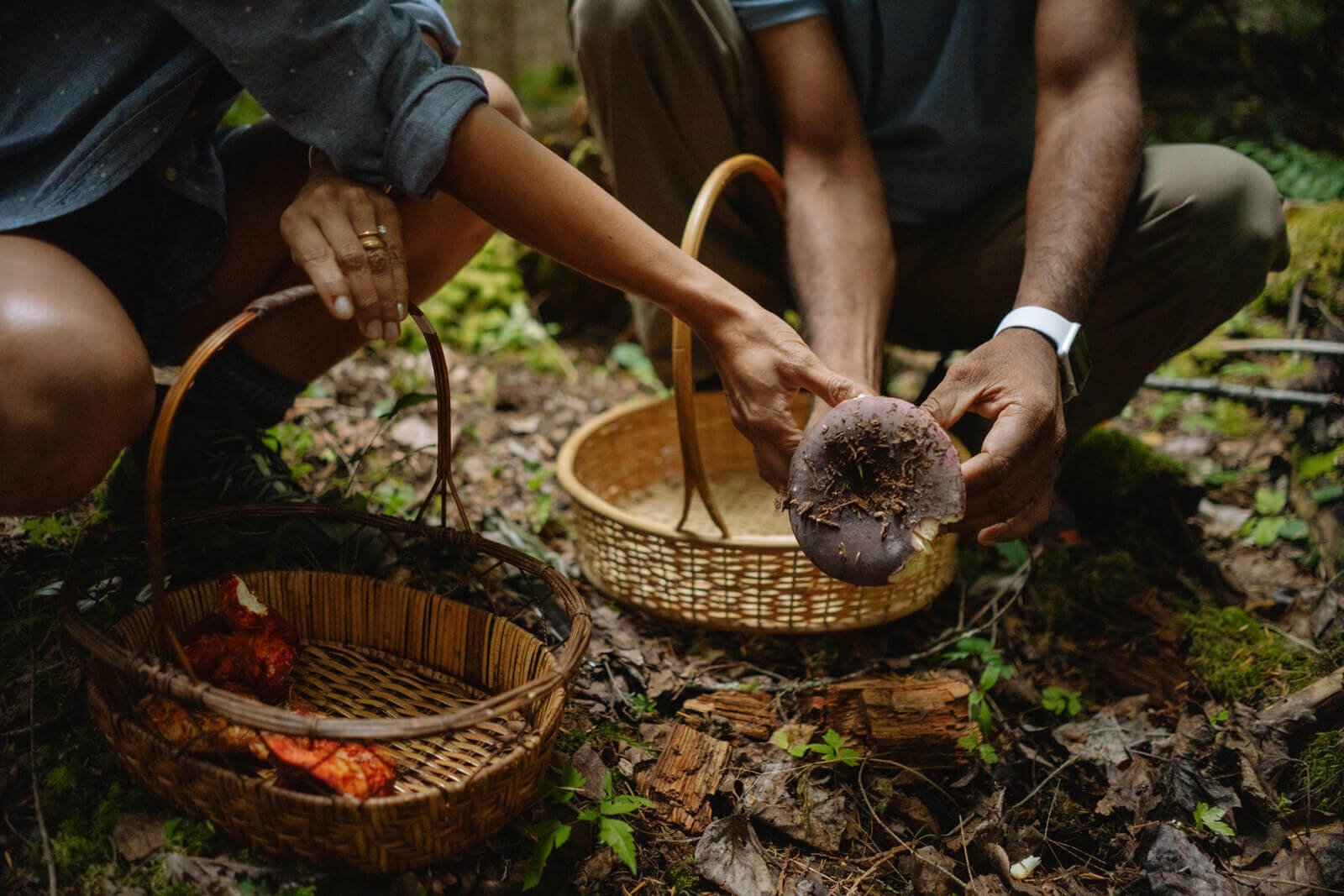
Look for: Chanterelles, lobsters, shaggy mane
Head south of Seattle to the Mount Rainier area between late summer and the first fall frost and you’ll see plenty of wild mushrooms, from chanterelles and larger lookalike pig’s ear to lobsters and shaggy mane mushrooms. Mount Rainier National Park is a prime spot for mushroom foraging in Washington, especially along trails near Longmire, Ohanapecosh, and White River. Foragers in the park are allowed one gallon of edible fungi per person, per day. The surrounding woodlands of the Gifford Pinchot (required free personal use permit here) and Mt. Baker-Snoqualmie National Forests are also ripe hunting grounds.
While independent mushroom collection is prohibited within the Mount St. Helens National Volcanic Monument, you can still learn mushroom identification and enjoy guided foraging with the Mount St. Helens Institute. The institute offers several short mushroom foraging hikes each fall for visitors. These hikes fill up fast, so be sure to register early.
Greater Seattle Area
Look for: Chanterelles
Perfect for beginners, Forage Seattle offers a mushroom foraging tour that takes visitors south of Seattle to hunt for mushrooms under the guidance of an expert. Learn how to tell the difference between edible and non-edible varieties and uncover tips for finding, cleaning, and storing your harvest. The organization also holds tours focused on popular varieties such as matsutakes and chantarelles, as well as an intro to gourmet mushroom foraging and cooking led by a chef.
Kitsap Peninsula
Look for: Chanterelles
With an active mushroom foraging club, the Kitsap Peninsula Mycological Society, beginner foragers west of Seattle in Bremerton and surrounding areas can enjoy making new connections as they learn about the wild world of mushrooms at events and forays. The website also includes an in-depth video series on mushroom identification. Head out on forest walks to hone your identification skills by spotting beautiful nonedible varieties such as purple or pink spiky coral mushrooms and slippery orange and yellow slime molds on decaying tree trunks. On Bainbridge Island, IslandWood offers family-friendly and kid-oriented mushroom identification classes during the fall.
Also See: Kitsap Peninsula Road Trip
San Juan Islands & Whidbey Island
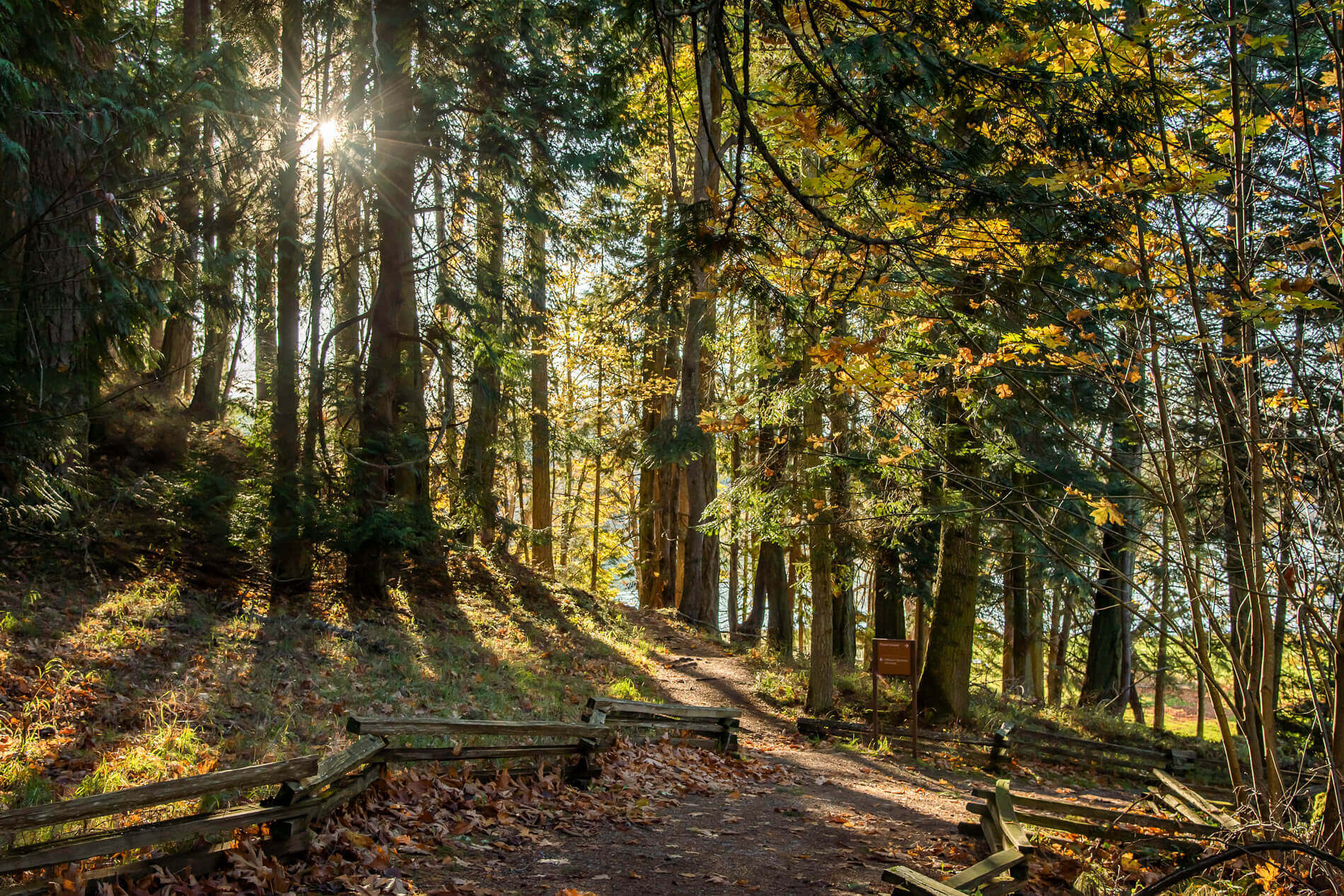
Common varieties: Oyster and lobster mushrooms
Most think of whale watching and water adventures when traveling to Washington’s islands, but you’ll also find plenty to do on land. As the leaves turn colors, it’s the perfect time for mushroom foraging in the San Juan Islands. Look for oyster and lobster mushrooms as well as rarer species like the wavy, crinkly cauliflower mushroom. Though you may not find many chanterelles, the islands have beautiful fungi that differ from those flourishing on the mainland. On Orcas Island, try Moran State Park or Turtleback Mountain Preserve.
On Whidbey Island, consider joining a mushroom-hunting excursion led by an experienced forager. In fall, frequent seasonal tours are available through Whidbey Wild Mushroom Tours.
Also See: Perfect Fall Getaway on San Juan Island
Mushroom Safety Tips
When foraging for wild mushrooms, there’s always the possibility of ingesting a poisonous variety. To reduce your chances, follow these safety tips:
- When in doubt, throw it out.
- Stick to what you know and always use a mushroom identification guide to check for accuracy. Mushroom identification apps are less reliable and may not be available in the field due to a lack of service.
- If you’re picking mushrooms in clusters, be sure you look over each one to confirm its identity before cooking; sometimes toxic lookalikes will grow with edible ones.
- Thoroughly cook and sample a small portion of any new-to-you foraged mushroom to see how your body will handle it.
- If you think you have ingested a toxic mushroom, contact the local Washington State Position Control Center immediately.
How to Forage Responsibly
Show your love for the land by foraging responsibly and leaving fields, meadows, trails, and other mushroom-laden locations in good condition for future generations. Only take what you need (leave some behind for future years and other foragers) and cover any disturbed ground.
Be sure it is legal to forage in the area — only harvest on public land, and be sure you know the regulations of the specific forest, park, or jurisdiction before you go. See guidelines and information about limits and the number of harvesting days allowed per year in different areas on the Puget Sound Mycological Society website.
Many wild mushroom foraging locations are kept secret to prevent overharvesting. Please respect the wishes of local mushroom clubs or tour operators if requested to not disclose specific locations on social media.
Foraging Supplies
Pack these basics when mushroom hunting in Washington.
Attire: Wear sturdy shoes and bring layers, including waterproof gear. A wide-brimmed hat can protect against sun, rain, and spider webs.
Tools: Collect mushrooms in a basket or mesh bag to encourage the release of spores. To make clean cuts, you’ll also want a folding knife made for mushroom harvesting or a pocket knife.
Other Essentials: Bring snacks, plenty of water, a mushroom identification guide, and anything else on the hiker’s 10 essentials list. In fall forests, underground yellowjacket nests are extremely active, so be prepared for any stings with proper medication
– Additional writing by Christina Montoya Fiedler
About the Author
Jennifer Burns Bright is an editor and writer based in Astoria, specializing in Pacific Northwest travel, wellness, and local food. She enjoys foraging for wild food and renovating her 110-year-old cottage. She oversees longform content for clients like Travel Oregon and contributes to AAA’s Via magazine, among others.
